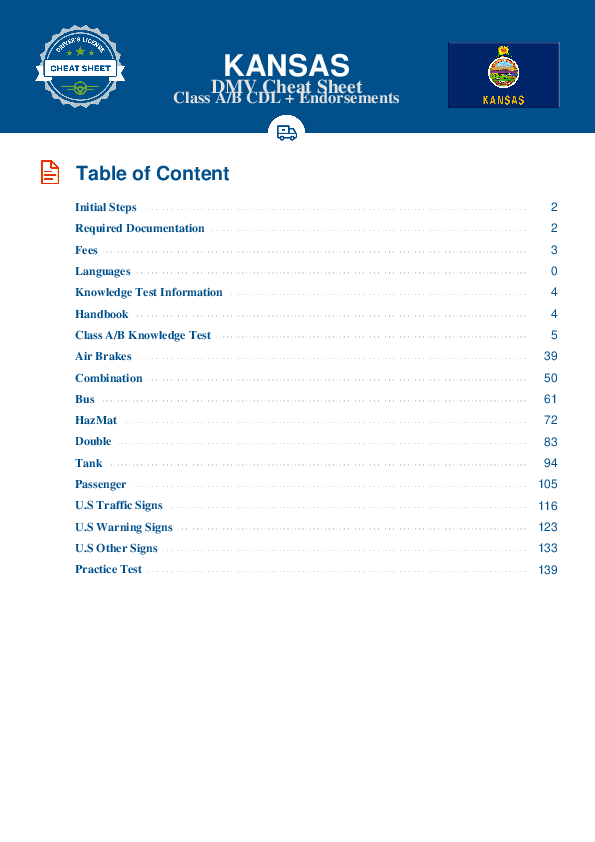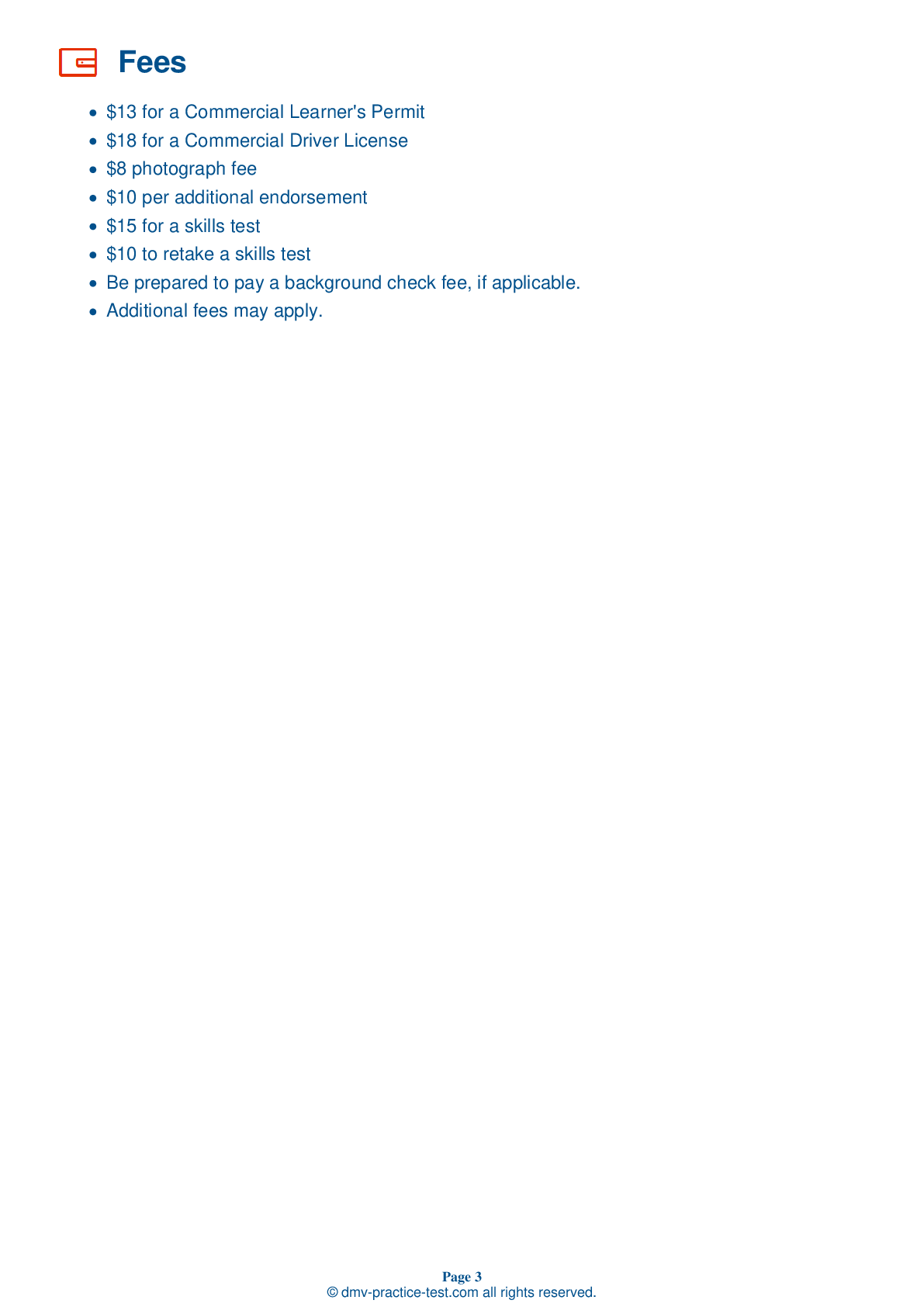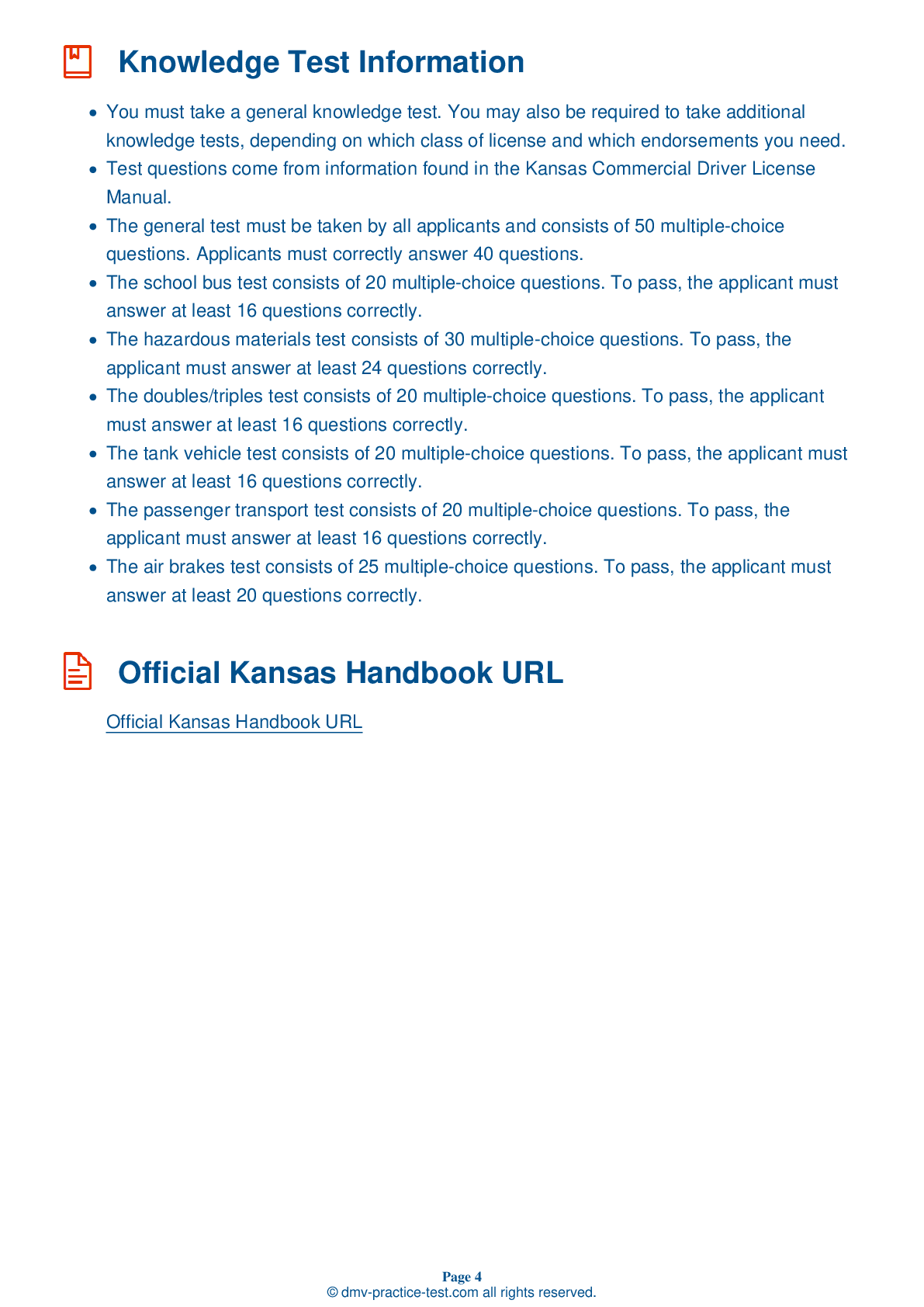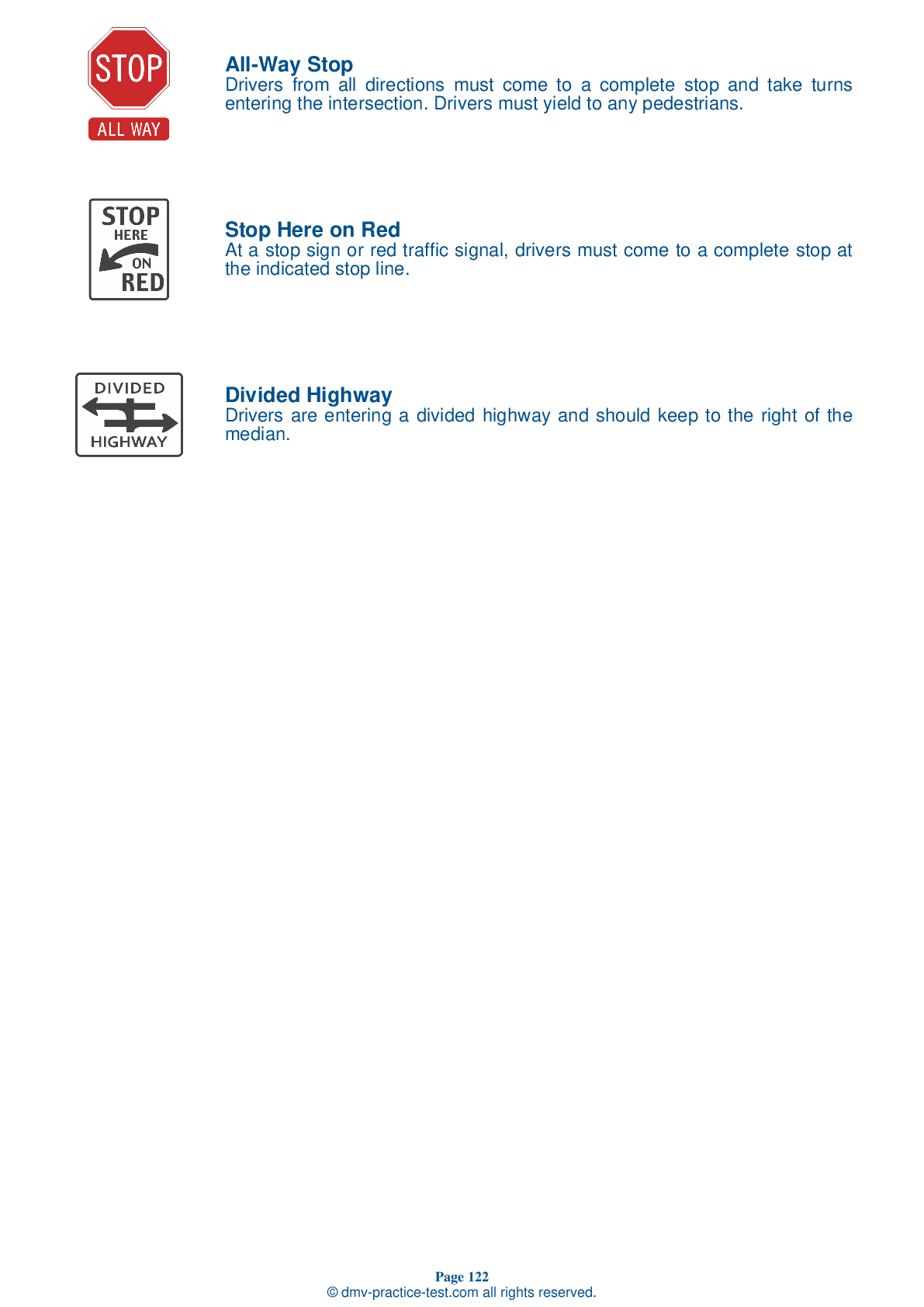Class A Driving Test | Kansas 2026 #2 Page 2 of 7
Train for FREE online with our Kansas class A license test. The official exam test consists of several obligatory parts, with all of them checking your knowledge of different blocks of road rules. If you need to obtain a KS CDL class A permit in 2026, practice as much as possible. Free sample tests published on our website will help you check and improve your knowledge and boost your grades. Please bear in mind that CDL class A requirements may vary from state to state.
8 . If you’re unfamiliar with the area in which you must back up, you should:
Backing is always dangerous because you cannot see everything behind your vehicle. Especially if you are unfamiliar with the area, you should get out of your vehicle and familiarize yourself with your path of travel before beginning to back up.
9 . You may be denied a HazMat endorsement if:
You will be denied a HazMat endorsement, or lose an existing endorsement, if you are not a lawful permanent U.S. resident; you renounce your U.S. citizenship; you are wanted for, under indictment for, or convicted of certain felonies; you are judged as mentally unstable or are committed to a mental institution; or you are deemed to pose a security threat by the Transportation Security Administration (TSA).
10 . Air tank drains:
In an air brake system, the air storage tanks must be drained to remove accumulated water and compressor oil. Failing to do so can cause damage. Manually operated drains should be used at the end of each day of driving.
11 . When asked to complete an offset back/right parking maneuver, you should:
If you are asked to complete an offset back/right parking maneuver, you should first pull straight forward, then back up to the right. Your vehicle must be parked completely within the boundaries of the parking space.
12 . If another driver is following you too closely, you should do all of the following, except:
If you are being followed too closely, you should increase your following distance, avoid making quick moves, and avoid relying on tricks (such as flashing your lights) to help other drivers pass. Speeding up may only increase the danger by causing the tailgater to continue tailgating you at a higher speed.
13 . The best way to avoid glare at night from oncoming vehicles is to:
To avoid being blinded by the lights of oncoming vehicles, you can glance to the right side of the road until the vehicle has passed.
14 . Which of the following is not a rule for using turn signals?
Always signal before a turn or lane change. Begin signaling well in advance of the movement and keep the signal on continuously during the turn. If it is not self-canceling, make sure to turn your signal off after your turn or lane change is complete.
See the exact questions that will be on the 2026 Kansas DMV exam.
99.2% of people who use the cheat sheet pass the FIRST TIME
Lillian MCcranie explains how our CDL study guide was helpful in passing the exam and recommends it to everyone.
Cameron tells us how he purchased the CDL exam, and found it to be a useful tool which helped him pass the exam and find a job.



